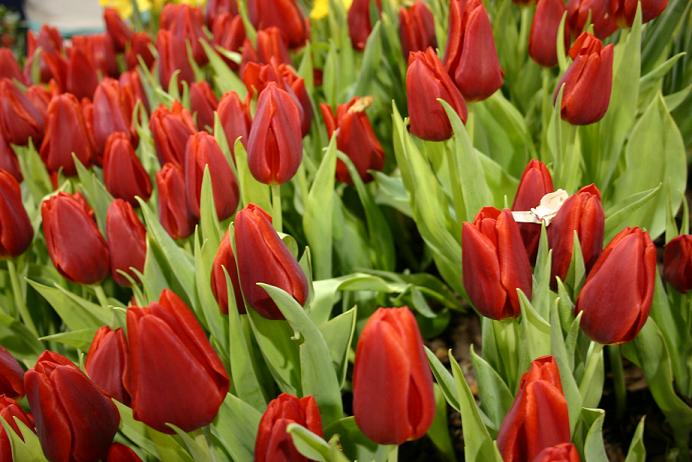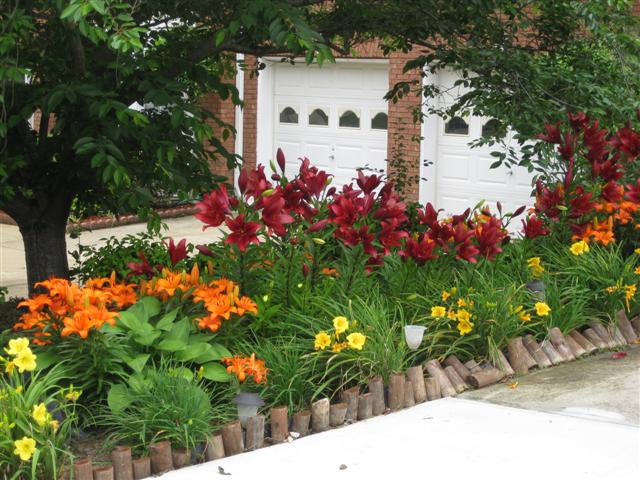Design Tip: November 12, 2009
For purposes of this article, I am including other bulbous-rooted plants, such as corms and tubers, that may not technically be
classified as bulbs.
Using bulbs in the garden can be one of the easiest ways to have multiple seasons of blooms
with plants that occupy practically the same space. Planting and maintaining bulbs is often
easier than dealing with other commonly used perennials and annuals.
Without a doubt if you ask someone about gardening with bulbs, they immediately embark upon a
conversation about daffodils and tulips. Indeed, with dozens of different varieties of daffodils
and tulips, it's common to not think beyond these two groups of plants. While both tulips and
daffodils can put on traffic-stopping floral displays, tulips really need to be replaced annually
and daffodils can quickly get boring.
Preparing the Garden
Most bulbs do best when planted in full sun to light shade with loose, organic and well-drained soil.
Too much moisture around the bulbs can lead to rot. There are some that will grow in partial to
medium shade (especially the native bulbs which are often woodland plants)
and a few that tolerate or prefer moist to wet soil. However for the most commonly
available bulbs, sun and drainage are the keys to success.
It is possible to layer various bulbs in the garden in a similar way to preparing lasagna. The larger the bulb, the deeper it's
usually planted. A good rule is to plant a bulb to a depth of 2-3 times its diameter. Exceptions to this rule are those
plants that grow from tubers, such as irises which require a shallower planting. If you are planting a bulb garden, it's best
to dig out the entire area setting aside the dirt. Install the deepest planted bulbs firt, add dirt and continue with shallower
and shallower layers until the bed is full. Bulbs should always be planted with the round end down, pointed end up. If a bulb
is round and you can't tell which end is up, plant it on its side. The plant will correct itself as it germinates.
This
diagram shows the proper planting depth for a wide
variety of bulbs.
To keep pests from digging up your bulb bed, you can place bird netting over the top of the soil and
cover it with mulch. When the foliage emerges, it should be able to work its way around and through
the openings. If you want to plant annuals or perennials over the bulbs, simply cut a small hole in
the netting and reposition it afterwards covering it with the mulch.
Spring Flowering Bulbs
Most of the spring flowering bulbs are very familiar to gardeners and include tulips, daffodils,
glory-of-the-snow (Chinodoxa), star flower (Ipheion), grape hyacinths (Muscari), English bluebells,
crocus, etc.
Spring flowering bulbs are best planted in the fall through early winter once the soil temperatures
have cooled below about 60 degrees, but this is not all that critical. Planting depth for bulbs
is usually recommended at 2-3 times the diameter of the bulb. Sometimes it can be difficult
to determine which side is up. For daffodils and tulips, it's pretty easy to see that the top of
the bulb is much narrower than the rounded bottom. However, on other bulbs it isn't
always so easy to tell. Use your best judgment. Bulbs planted upside down will still grow fine using
gravity to determine which way is up sending out stems and roots accordingly. I also suggest
tossing a teaspoon of bulb booster fertilizer in the hole with the bulb.

|
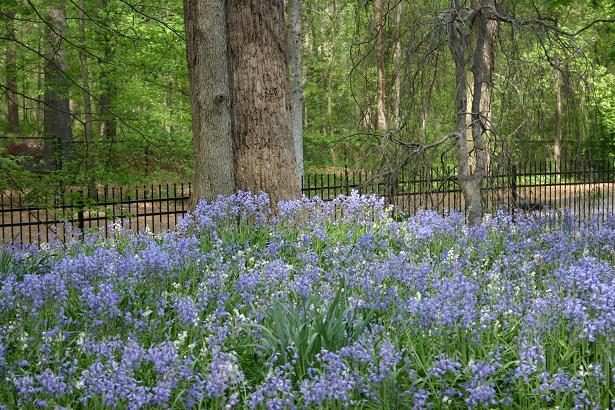
|
| Daffodils | English Bluebells |
| |
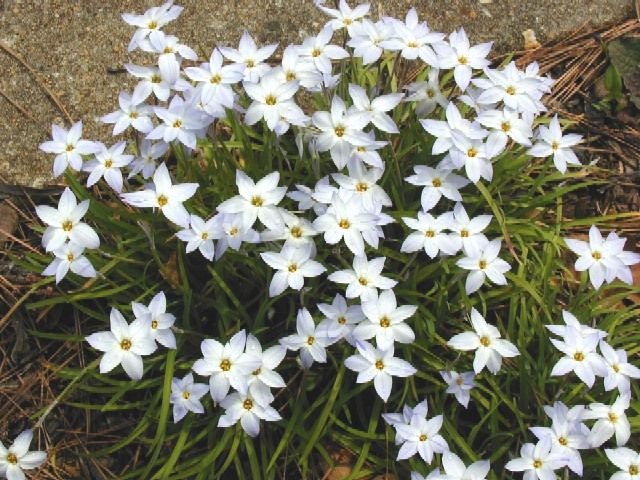
|
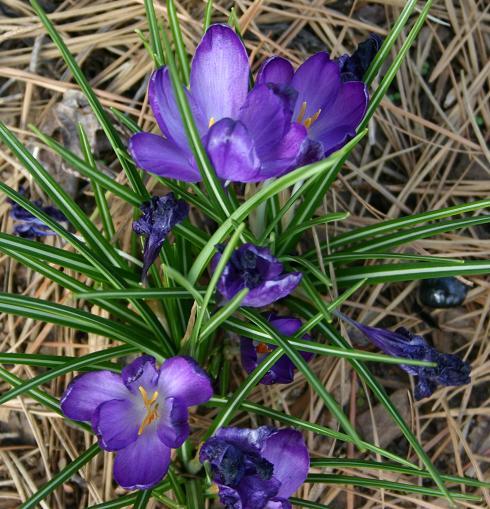
|
| Spring Starflower | Crocus |
It's extremely common for some spring bulbs to sprout foliage during the winter. Tulips, daffodils
and crocus are notorious for this. Since these plants are hardy into zones 3 and 4, there isn't much
damage that can be caused by our zone 7-8 winters. Nothing needs to be done. Some of the earliest
varieties can and have bloomed through ice and snow without damage.
Because some very early spring bloomers send up foliage and bloom before the trees have completely
leafed out, they can often be planted in partial shade or woodland areas. These include crocus,
bluebells and many varieties of daffodils.
Summer and Fall Flowering Bulbs
Hardy, summer and fall-flowering bulbs can also be planted in the fall. These include a variety of lilies (Asiatic, tiger,
turk's cap, etc.), irises, spider flower (Lycoris radiata), rain lily (Zephyranthes spp.), crocosmia,
hardy cyclamen, fall blooming crocus and others.
Native Bulbs
We have some wonderful native bulbs such as bloodroot which blooms in the very early spring. Some trilliums
begin blooming around the same time as the bloodroot and other continue into the late spring or early summer. Virginia bluebells
bloom in March to April and fly poison in late spring. All of these plants are found in rich, moist forests.
Other native bulbs that bloom later include blue flag iris and turk's cap lily.
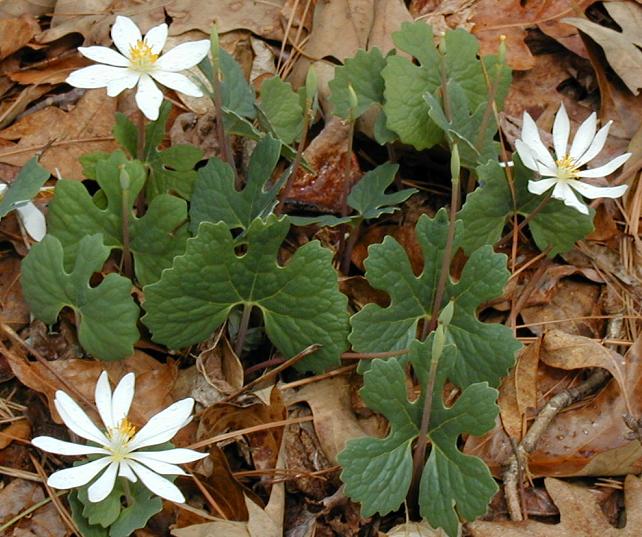
|
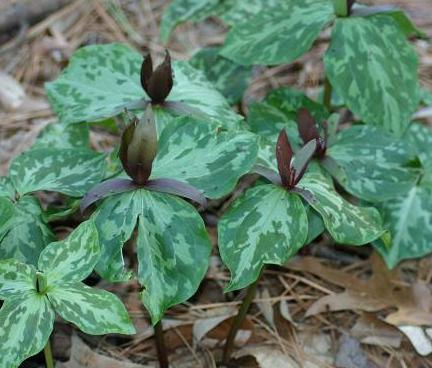
|
| Bloodroot | Trilliums |
| |
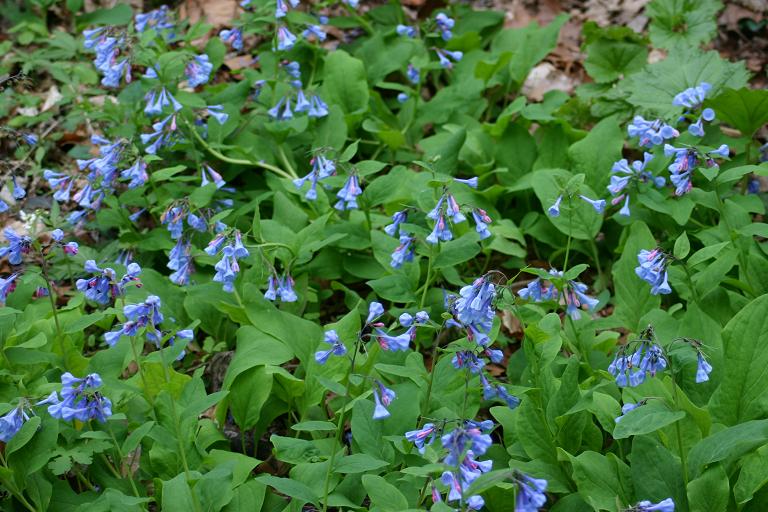
|
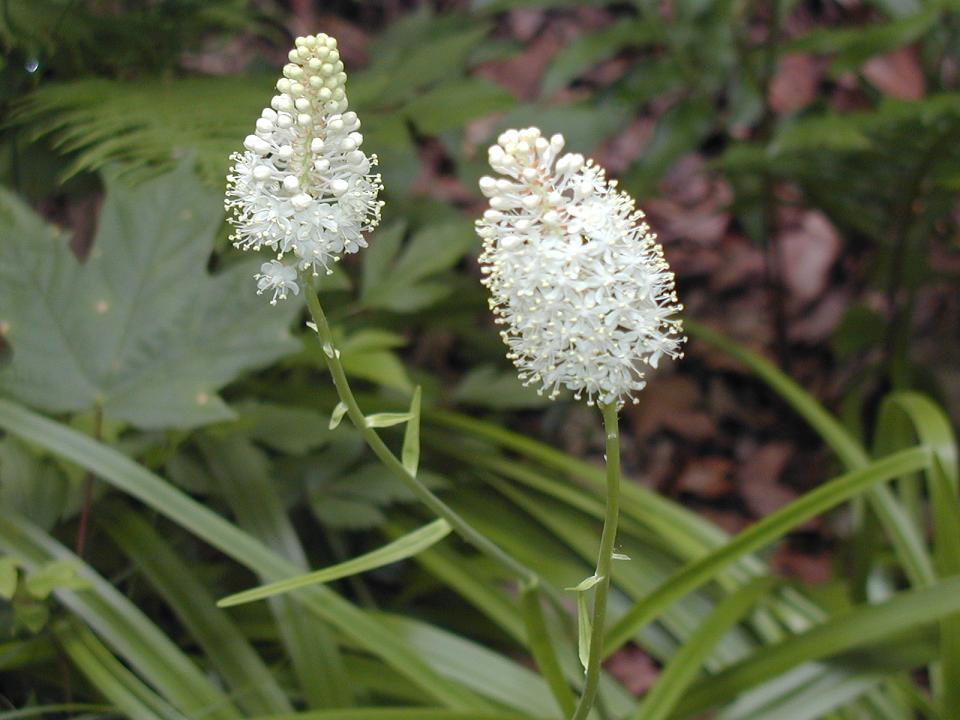
|
| Virginia Bluebells | Fly Poison |
Mail Order Sources for Bulbs:
Van Engelen, Inc.
Brent and Becky's Bulbs
John Scheepers, Inc.
Breck's
Please note, I have not used all of the vendors listed above.
If you have comments or questions about this article, please
email me.
Unless otherwise noted, Images & Drawings Copyrighted © 2009 by Theresa Schrum - All rights reserved
